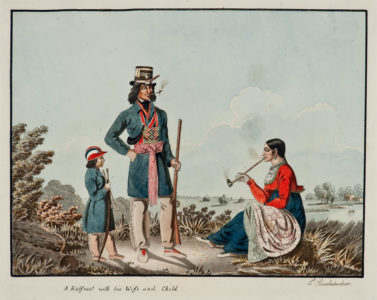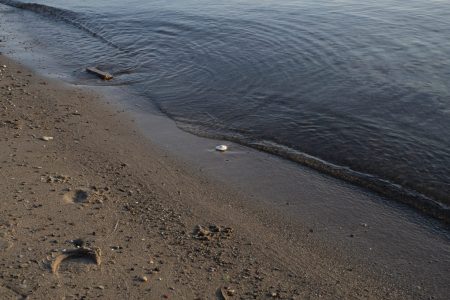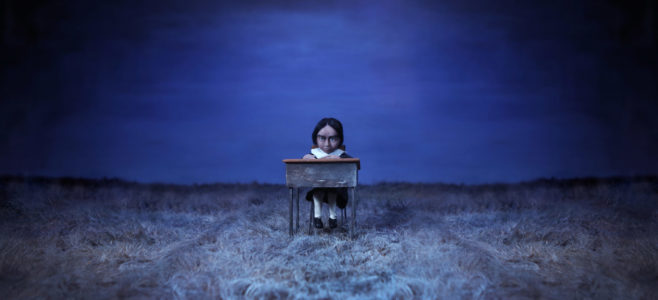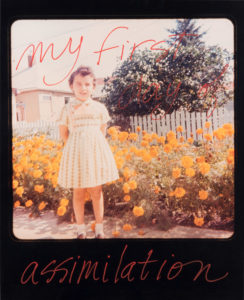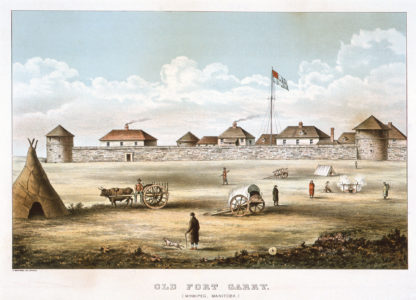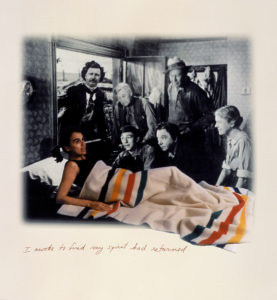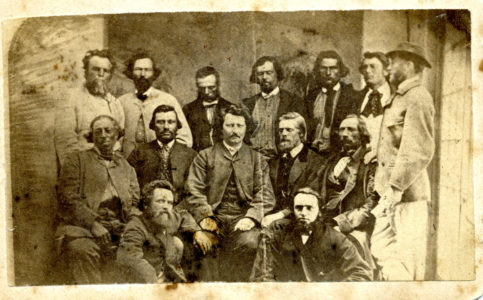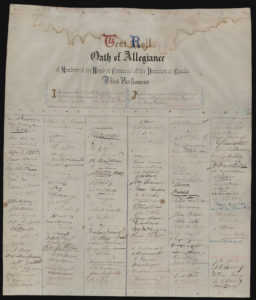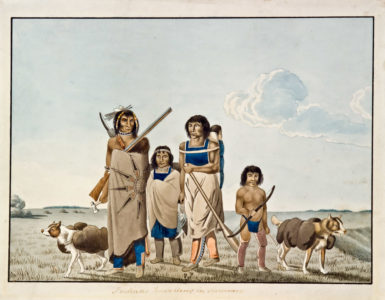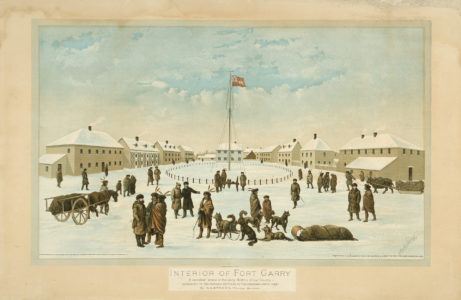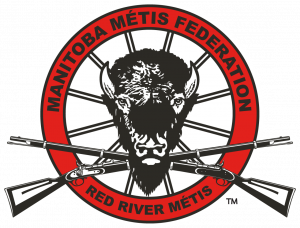Manitoba’s entry into Canadian confederation was fraught, marked not only by organized resistance, but also by deep and careful thinking about the future and its possibilities. Kwaata-nihtaawakihk – A Hard Birth (pronounced kwa-ta knee-ta wa kick) will prompt you to reflect on the Métis nation’s role in Manitoba’s creation and consider the significance of the events of 1869-70 in relation to our current times. This exhibition will guide you to a better understanding of the Métis, Anishinaabek, Cree, and European experiences of debate and negotiation, displacement, trauma, and resilience.
Kwaata-nihtaawakihk – A Hard Birth will bring together key archival documents, historic objects, and paintings with the work of 15 contemporary artists representing Métis, First Nations, and non-Indigenous communities. You’ll see extraordinary beadwork, painting, photography, film, textiles, sculpture, and performance art. Four artists are creating commissioned works for this exhibition, including Jennine Krauchi’s new large-scale beadwork piece.
You will feel this show’s presence throughout the Gallery with dynamic, educational programming that celebrates Métis culture. Stay tuned for special events, performances, screenings, workshops, and more!
Special thanks to Michif Elder Verna Demontigny for gifting the name for the exhibition.
IN THE NEWS
- April 8, 2022 – Galleries West: Manitoba’s Métis History
- March 18, 2022 – CTV News: New WAG exhibit shines light on Metis role in founding of Manitoba
- March 17, 2022 – Winnipeg Free Press: Framing the Past
- March 15, 2022 – CBC Manitoba: New WAG-Qaumajuq exhibit honours the creation of Manitoba and the Red River Metis’ role in its founding
- January 20, 2020 – Winnipeg Free Press: WAG exhibit provides ‘new lens on the Métis people’
Timeline
October 1869
- October 11: Louis Riel steps on the survey chain of the Canadian survey crew trespassing on Andre Nault’s land. He is part of a group who confront the crew.
- October 19: A 12 member Comité National des Métis is elected with John Bruce president, Louis Riel as secretary.
- October 24: Louis Riel addresses the congregation at the St. Boniface Cathedral to explain the reasons for stopping William McDougall, who has been sent to Red River to act as Canadian lieutenant governor before the territory has been officially transferred.
- October 26: Barricades are raised and roads are blocked.
- October 30: William McDougall arrives in Pembina, North Dakota and is advised to stay on the American side of the border.
November 1869
- November 1: André Nault and others turn McDougall’s representatives back.
- November 2-3: One Métis patrol escorts McDougall and his party back across the border; while another party seizes Fort Garry. They lower the Hudson’s Bay Company flag and raise a flag of their own. Council of Twelve is formed.
- November 16: The Convention of Twenty-four (12 “English” parish representatives/12 “French” parish representatives) begins a series of meetings.
- November 19: The Hudson’s Bay Company Deed of Surrender for the Territory of Rupert’s Land is signed and sealed, forwarded to the Colonial Office and accepted by Queen Victoria. Thomas Scott and three other men are charged with assault in an attack on a road crew.
- November 24: The Convention of Twenty-Four establishes a Provisional Government.
- November 27: Voting rights are determined, including the rights of women.
December 1869
- December 1: William McDougall asserts his new powers, reading a proclamation alone on the prairie in the middle of a blizzard. Convention of Twenty-Four issues a Bill of Rights.
- December 5-6: Governments of Canada and Great Britain issue statements to assure the residents of Red River. Donald Smith is sent to Red River, “I do assure you that on union with Canada, all your civil and religious rights will be respected.”
- December 8: “Declaration of the People of Rupert’s Land and the North West” issued by the Provisional Government, signed by John Bruce. Riel orders the arrest of forty-seven “Canada First” members and opponents of the Provisional Government.
- December 10: The Provisional Government ceremonially proclaimed at Upper Fort Garry.
- December 18: Canadian annexation is postponed. William McDougall returns to Ontario bringing The Bill of Rights with him.
- December 27: The Provisional Government adopts resolutions that establish a new president (Louis Riel) and other ministerial positions and responsibilities to manage the business of the region while negotiating.
January 1870
- January 9: Twenty-four of the prisoners escape
- January 21: “Les Droits Civil” declares that individual rights supersede the rights of the state “la liberté de la personne de chacque habitant du territoire, quelle que soit son origine, sa coleur, sa condition” (The personal freedom of every inhabitant of the territory, whatever his origin his colour, his condition). Provisional government establishes a Law Committee who discuss and formulate a law code. The committee includes James Ross, a graduate of University of Toronto’s Osgood Hall, Louis Riel, and Thomas Bunn who both had legal training. Thomas Bunn drafts a constitution.
- January 25: Elections for the Convention of Forty/La Grande Convention were held, expanding representation to 20 “French” and 20 “English” representatives.
- January 26: The Convention debates and accepts “Les Droits Civil.”
February 1870
- February 15: Opponents of the Provisional government, most newly arrived from Ontario, organize and hold a large meeting, which erupts in violence leaving two dead: Norbert Parisien and John Hugh Sutherland.
March 1870
- March 4: Thomas Scott is executed by firing squad.
- March 24: The Convention discusses a variety of bills, including the need for an ongoing military presence.
- March 25: The Convention declares itself as “The Legislative Assembly of Assiniboia”.
September 1870
- September 13: Elzear Goulet is pursued by a group of drunk Ontario Rifle soldiers. He tries to swim the Assiniboine River, but is “stoned to death in the water”.
Stories
Monday, May 2 '22
Kwaata-nihtaawakihk: A Hard Birth - A Space for Engaging the Future
Kwaata-nihtaawakihk: A Hard Birth is an essential remembering of the unique formation of the province of Manitoba, and a space for engaging the future. A...Wednesday, Aug 31 '22
Catching up with the Curators: Kwaata-nihtaawakihk: A Hard Birth
Kwaata-nihtaawakihk: A Hard Birth is an incredible exhibition with a long road to opening; originally a part of the Manitoba 150 commemoration, the exhibition was...To plan your visit, check out wag.ca/visit.
